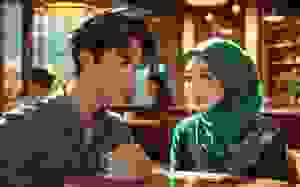Play As Placemaking Modular Playgrounds That Turn Underused Parcels Into Micro Parks
Many cities today face a dual yet related issue: empty lots attract problems, and kids don’t have enough safe, outdoor spaces. These underutilized land parcels, even with fences around them, become hubs of crime. Meanwhile, children looking for activity may wander into those spaces and encounter broken glass, needles, and worse. The good news is that modular play systems can turn these empty lots into community havens that benefit an entire neighborhood. Here’s how:
Why Modular Playgrounds Are Perfect for Micro-Parks
It’s expensive to put in an entire playground in the traditional sense. They call for months of planning, costly equipment, specialized labor, and lots of space. They’re also permanent and require a ton of maintenance to keep up, particularly if equipment breaks or the surfacing is destroyed. Often, by the time a city announces a new park, it’s still over a year from being ready to play on. And, of course, there are delays.
Micro-Parks address every single one of these issues. Plus, they’ll change an ugly, abandoned corner into a vibrant, thriving activity hub. Modular playgrounds are flexible and can be designed in multiple ways. They can scale with the space, with just a few small structures or a sprawling layout. This type of commercial playground equipment is also incredibly affordable and can come ADA and safety-compliant from the start.

The Design: They’re Such Small Spaces!
Once you’re sold on the why, it’s time to figure out the how. Far too many parks and playgrounds are simply that: parks…. or playgrounds. Sure, there’s lots of grass, a few benches, and a play structure or two. The playgrounds are big, with bold colors, and tanbark or gravel surfaces. But there’s little to excite kids and get them to run, play, jump, swing, and frolic. And while any park is better than no park, if you’re designing from the ground up, you might as well create something amazing.
The most important first step is to get your local community involved. Look around. What’s the ethnic and cultural makeup of the neighborhood? A large mural with local or cultural heroes on a large wall can attract neighbors. Structures for the full range of kids can make them all feel challenged, regardless of their size or ability. And shades and picnic tables allow parents and caregivers to rest while their kids play. Now just add some signage and safety lighting, and you’ve got a local landmark on your hands.
How Micro-Parks Can Shape Communities
The primary goal of these micro-parks is to fill empty urban space and give kids a safe place to play, of course. But these spots are also great for all of your neighbors, even those without kids. Empty lots are bad for a city because they attract trouble and bring down property values. Plus, they often stop new families from moving into the area. This means the entire city loses money that can be funneled back to the people via social programs and small business support.
When you create vibrant, welcoming parks, even on small street corners, you revitalize your community. Property values go up, and private investors are more likely to fund projects and support businesses. These spaces also contribute to the long-term health of kids who get more physical activity and more time engaging in creative play. Finally, micro-parks invite members of the community to get out of their homes and socialize more, leading to more active and engaged residents of your city.

Taking the First Steps to Revitalizing Your Neighborhood
Now, how do you get started creating one of these micro-parks in your community? Or two or three? It begins with scanning your neighborhoods and finding those empty lots. You likely already have at least a couple in mind. They’re the blights on your city with weeds growing up through the cracks in the concrete and broken bottles posing a risk to anyone who wanders in. The good news is they’re also usually highly visible and accessible, which means they’ll attract families and kids once you turn them into community spaces.
Next, partner with developers, the members of the city council, the parks and recreation department, and community groups. Discuss the benefits of turning the lots into microparks, budget ideas, and how you can get funding. Consider grants, public-private partnerships, and even ways to incentivize developers to cut their rates or invest themselves. Then, take small strides toward revitalizing and transforming the parcels. Finally, make sure you get your community members involved in design ideas, so the parks truly become shared by all.
In the end, you’ll be hard-pressed to find a downside to taking up dark and dreary, dangerous parcels and turning them into spaces for hope and happiness. And it doesn’t have to cost a ton of money and take months or years to develop. You can transform an empty lot into a micro-park with modular structures and fabulous murals in a matter of months. And you can get an entire neighborhood excited to pitch it. The most important step you can take is the first one.
Artikel ini hanyalah simpanan cache dari url asal penulis yang berkebarangkalian sudah terlalu lama atau sudah dibuang :
https://www.architectureartdesigns.com/play-as-placemaking-modular-playgrounds-that-turn-underused-parcels-into-micro-parks/
 PING BABAB : Raksasa Aggregator Malaysia
PING BABAB : Raksasa Aggregator Malaysia



























